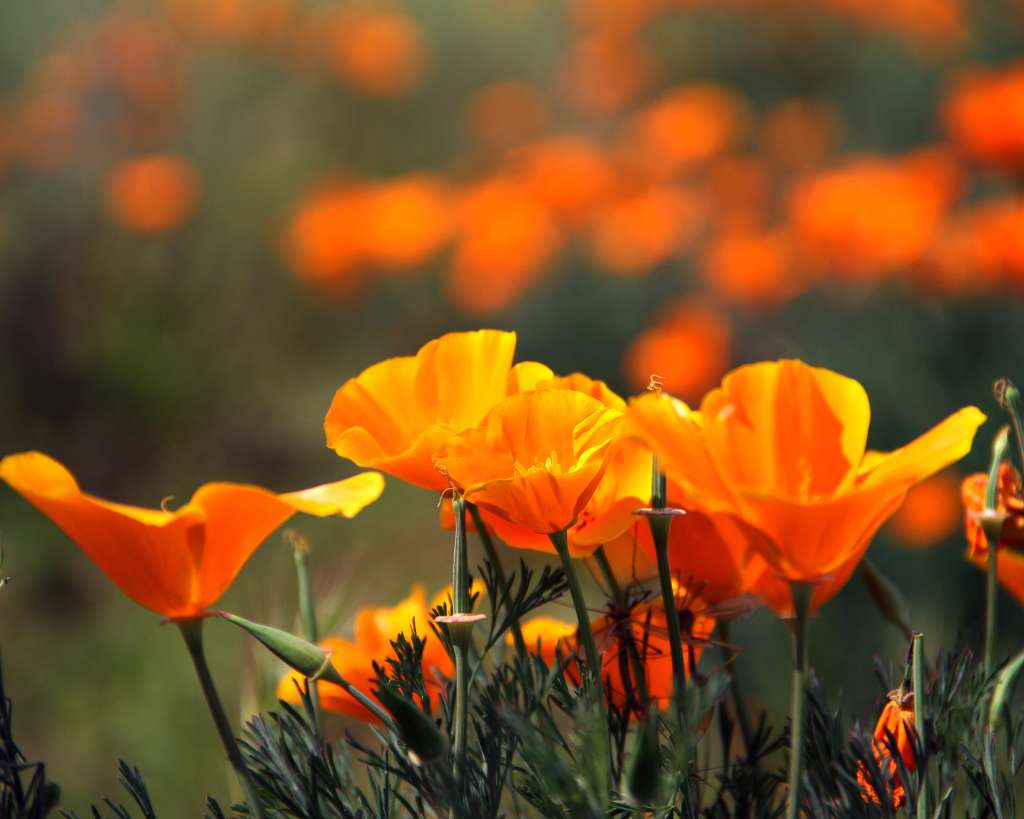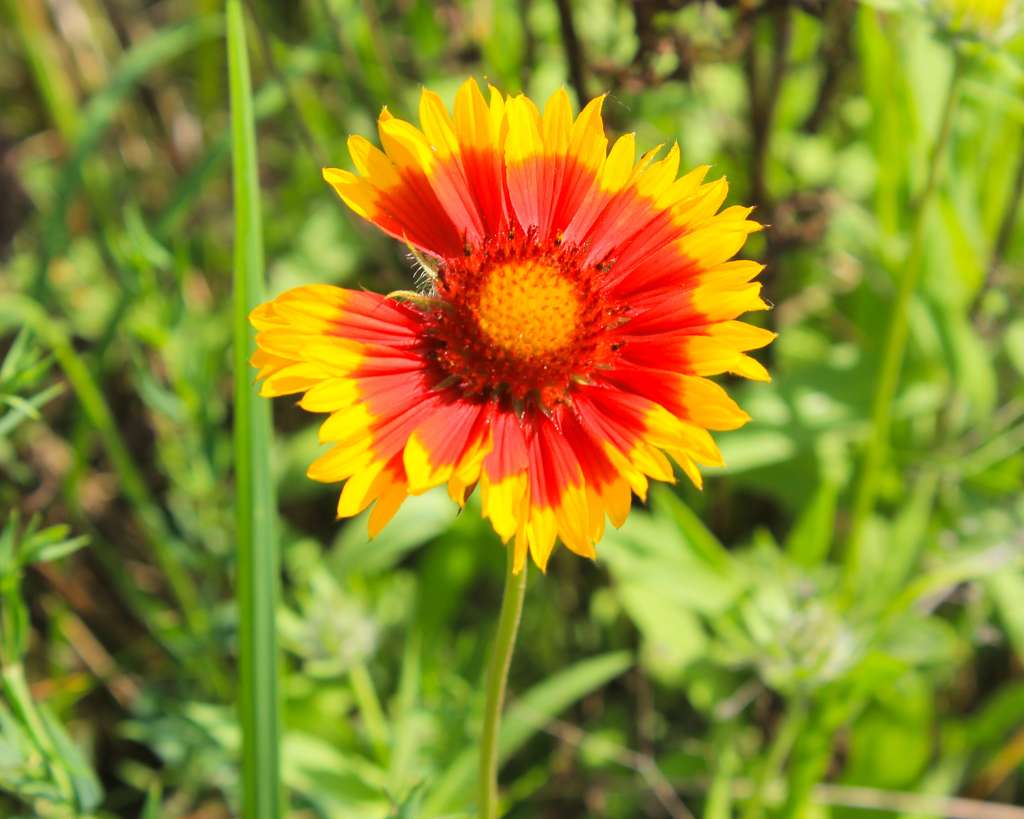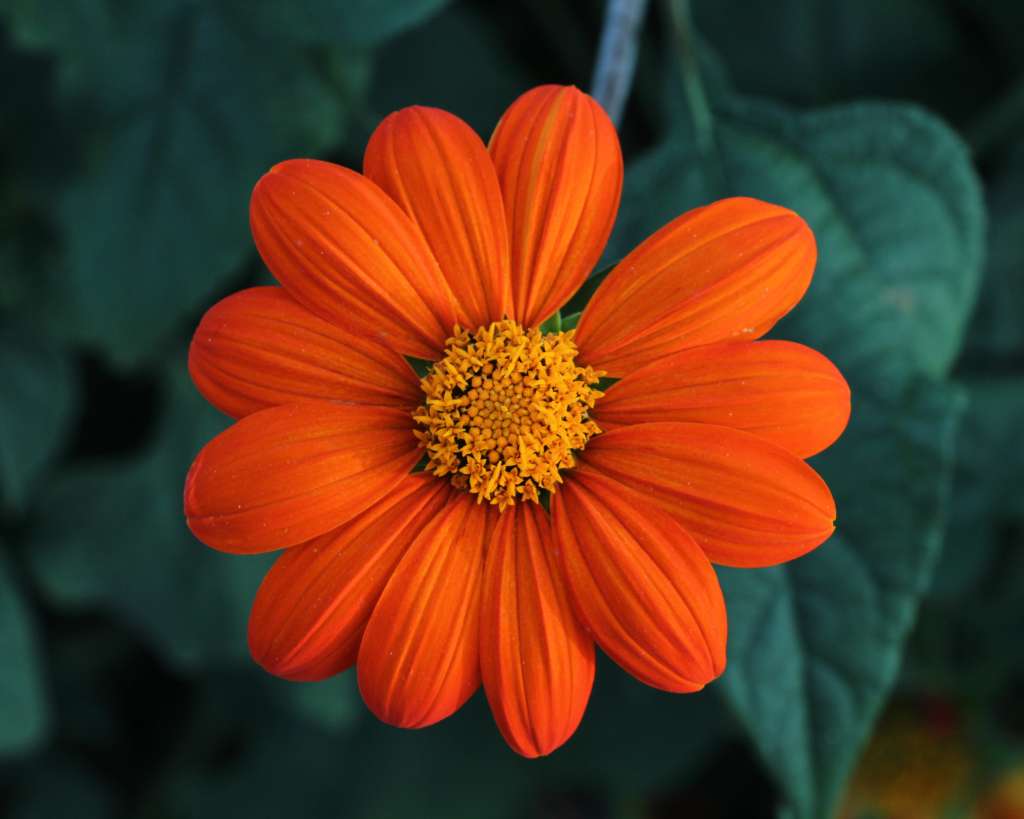Suppose you’re living in a region with a water shortage and are a passionate gardener who wants something other than a drab-looking garden. In that case, you can add some of these drought tolerant plants with orange flowers to enhance the aesthetic appeal of your yard.
You can have your dream garden without fussing about the lack of water and other resources. We have compiled a list of 13 drought tolerant orange flowering plants you can consider planting in your garden.
Orange California Poppy (Eschscholzia californica)

The Orange California Poppy (Eschscholzia californica) is a popular drought tolerant plant that is native to California but is now grown in many parts of the world. It’s named after its vibrant orange flowers that bloom in spring and summer.
The plant has a taproot that can reach deep into the soil to access water. It also has the ability to close its leaves during periods of drought to conserve moisture.
It likes full sun and is tolerant of an array of temperatures, making it an excellent option for various climates. Its bright orange flowers are highly attractive to bees and other insects.
It is a good choice for border plantings, as it has a low-growing, mounding habit that looks attractive along borders or pathways. It is ideally suited to rock gardens and can be planted in containers too.
To make your garden more visually appealing, you can plant Orange California Poppy with other drought tolerant plants such as Sagebrush, Lupines, Penstemon, and Lamb’s Ear.
“Spreading Sunset” Lantana (Lantana camara)

It is a popular Lantana plant cultivar known for its beautiful orange and yellow flowers. This plant is native to Central and South America but has become naturalized in many parts of the world, including the United States.
The most notable feature of this plant is its beautiful orange and yellow flowers, which bloom throughout the summer and into the fall. The flowers are highly attractive to pollinators, such as bees and butterflies. They can add a splash of color to any landscape.
It can be grown as a groundcover, in containers, or as a border plant. It also looks great when planted with other drought tolerant plants, such as Salvia, Black-eyed Susan, Coneflower, and Dusty Miller.
It is considered an invasive plant in some areas, particularly tropical and subtropical regions. You can take different measures to control it, such as Removing seedlings, Hand pulling or cutting back, Using Herbicides, and replacing them with native plants.
If you have pets at your home, you should plant lantana away from their reach because it is known to be toxic. The plant contains a group of compounds called triterpenoids, which can cause liver damage and photosensitivity in animals that consume them.
Lion’s Tail (Leonotis leonurus)

It is a herbaceous perennial plant that is native to Southern Africa. The plant grows up to 6 feet tall and 3 feet wide and produces clusters of bright orange flowers that resemble lion’s tails, hence its name.
It is well-adapted to drought-prone regions, as it can tolerate long periods of dry weather and poor soil conditions. Its deep root system allows it to access moisture deep in the soil, making it a great choice for water-wise gardens.
Lion’s Tail is not only drought-tolerant but also alluring to pollinators like bees and butterflies, which makes it a valuable asset to a garden that is friendly to wildlife.
It is great for xeriscape gardens, cottage gardens, or containers. It can be a great companion plant with lamb’s ear in a mixed border.
Blanket Flower (Gaillardia sp.)

Blanket Flower (Gaillardia sp.) is a popular herbaceous perennial plant native to North and South America. The plant generates big flowerheads resembling daisies that come in orange, yellow, and red hues.
Its gray-green foliage with fuzzy texture contrasts nicely with the bright orange, yellow, or red flowers, making it an attractive plant even when not in bloom.
These perennial flowers are excellent to grow in borders and rock gardens, water-wise gardens, cottage gardens, and butterfly gardens.
Incorporating Blanket Flower into a garden hospitable to wildlife is advantageous since it also appeals to pollinators like bees and butterflies.
It is a low-maintenance plant that is very easy to look after. It remains unscathed by the attacks of certain pests and diseases. Deer and rabbits do not like to roam around blanket flower.
Mexican Sunflower (Tithonia rotundifolia)

Mexican Sunflower (Tithonia rotundifolia) is a tall, drought-tolerant plant that produces bright orange or yellow flowers from mid-summer to fall. Belonging to the Asteraceae family, this plant is indigenous to Mexico and Central America.
Mexican Sunflower has a long blooming period that typically lasts from mid-summer to fall. During a season when numerous plants have ceased flowering, this brings a burst of color to the garden.
Mexican Sunflower’s tall stature makes it an excellent choice for planting at the back of the border. Plants like Lamb’s Ear and Dusty Miller’s silvery foliage can add a dramatic and visually attractive contrast when planted in front of Mexican sunflowers.
Like most plants on our list, the Mexican sunflower is easy to grow, and it isn’t affected by pests and diseases.
Orange Milkweed (Asclepias tuberosa)

Orange Milkweed, or Butterfly Weed, is a perennial plant with clusters of vibrant orange flowers. It is native to Southern Canada and most parts of the U.S.A.
Orange Milkweed is highly drought tolerant and can withstand hot, dry conditions without frequent watering. It is easy to grow and doesn’t require a lot of care. It remains largely unaffected by pests and diseases.
As a member of the milkweed family, Orange Milkweed is a valuable host plant for Monarch butterflies. The Monarch butterflies’ population has decreased drastically in the past two decades. Growing Orange Milkweed can help sustain its population. Furthermore, it lures in a diverse array of pollinators, such as bees and various butterflies.
It suits various landscape designs, such as borders and native gardens. It can be used in bouquets and floral arrangements to add color and texture.
Gazania (Gazania sp.)

Gazania is a genus of drought-tolerant plants known for their showy, brightly colored flowers. Although indigenous to Southern Africa, they can be discovered in various regions around the globe. In some regions, they are classified as weeds.
Gazania blooms are available in vivid hues, encompassing orange, yellow, pink, and red. The flowers are large and showy, blooming from spring to fall.
Requiring minimal upkeep, this plant is low-maintenance and generally free of pests, with no need for frequent pruning. Some species of Gazania can be used as a ground cover in a drought-tolerant landscape. They propagate rapidly and can create a compact layer of leaves that inhibits the growth of weeds.
It is also capable of attracting bees and other pollinators. It is a great companion plant for dusty miller due to the silvery foliage of dusty miller, which contrasts nicely with the bright colors of Gazania, and both plants are drought-tolerant and prefer full sun.
Bird of Paradise (Strelitzia reginae)

Bird of Paradise (Strelitzia reginae) is one of the most popular drought tolerant plants with orange flowers known for striking orange and blue flowers resembling a bird in flight. Bird of Paradise has tough, leathery foliage that can withstand drought and heat, making it a low-maintenance plant. It is also tolerant of salty and alkaline soils, making it a good choice for coastal gardens.
Although native to South Africa, Bird of Paradise (Strelitzia reginae) has been widely cultivated in various parts of the world. The flowers of Bird of Paradise are long-lasting and bloom throughout the year, adding a bright pop of color to any garden. The orange flowers are a popular choice for tropical-themed gardens or as a focal point in a landscape design.
It is not usually damaged by rabbits and deer, making it resistant to their browsing. However, it should be noted that the plant is toxic to cats and dogs, so it is important to keep it away from them.
Bonus Drought Tolerant Plants With Orange Flowers
Daylily (Hemerocallis sp.)
Arctotis “Sun Spot Orange”
Red Hot Poker (Kniphofia uvaria)
Torch Lily (Kniphofia sp.)
Crocosmia (Crocosmia sp.)
Can I plant drought-tolerant plants with orange flowers in containers?
Yes, you can definitely plant drought-tolerant plants with orange flowers in containers.
What are some common pests and diseases that affect these plants?
Some common pests and diseases that can affect drought-tolerant plants with orange flowers include Spider mites, Aphids, Powdery mildew, and Root rot.




